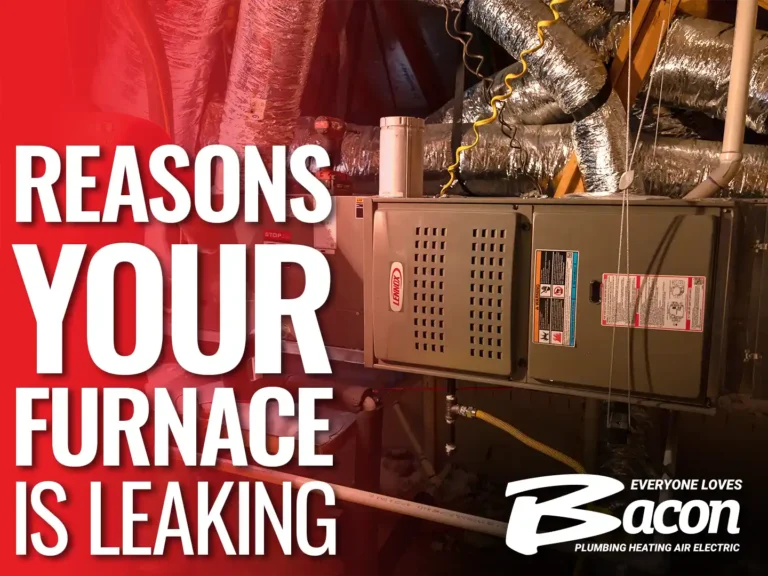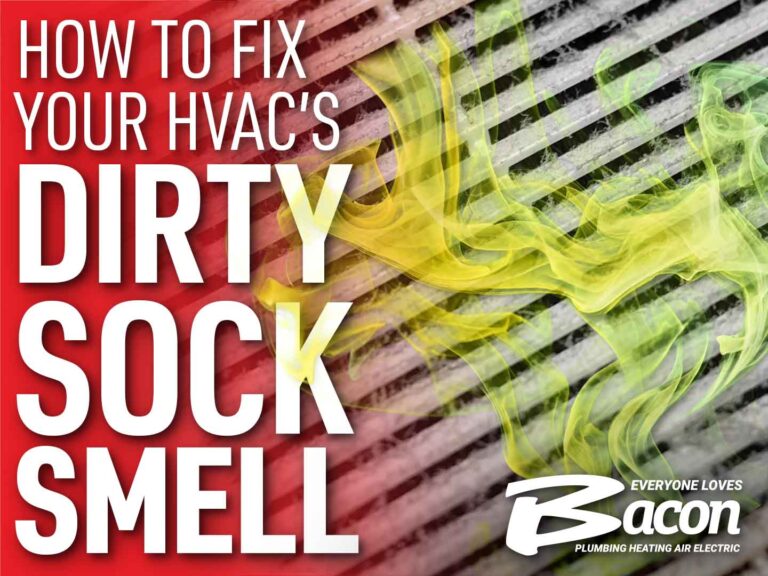If you’re unfamiliar with the technology and science behind heat pumps, they may seem a bit too good to be true. They offer heating and cooling for your home in a single convenient system, operate at efficiency levels bordering on the unbelievable, and reduce your home’s carbon footprint at the same time. Therefore, it’s natural to wonder how a heat pump can come with so many benefits without any obvious downsides. That’s why the team here at Bacon Plumbing Heating Air Electric decided to put together this guide to heat pumps. We’ll cover what they are, how they work, and why they’re rapidly displacing conventional heating and cooling systems throughout the Dallas-Fort Worth, TX, area.
What Is a Heat Pump?
Just as its name suggests, a heat pump is a device that can collect heat and move it from one place to another. It does so by using a refrigeration cycle, much like a conventional air conditioner. However, a heat pump can also operate in reverse, allowing it to provide heat in the winter. In cooling mode, heat pumps routinely compete with the most efficient air conditioning systems on the market. But in heating mode, they blow every other option away in terms of energy efficiency. In the right conditions, a heat pump can operate at up to 400% efficiency in the winter. As a result, homes with heat pumps often have yearly energy bills that come to half of what homes with conventional HVAC systems pay.
The Clever Science Behind Heat Pumps
To understand how a heat pump works, you must first understand the scientific principles that make them possible. The first principle that heat pumps rely upon is a particular part of the second law of thermodynamics. It states that heat energy will always spontaneously flow from hotter substances into colder ones. That is the basis for how heat pumps move heat from one place to another.
The second scientific principle that heat pumps rely upon is the relationship between pressure and temperature in liquids and gasses. In general, increasing the pressure on a substance will cause it to warm up while decreasing its pressure cools it down. Heat pumps make use of this by compressing and decompressing a refrigerant, which has the added effect of manipulating its temperature and boiling point.
How Heat Pumps Work Mechanically
Although heat pumps can operate in both heating and cooling modes, their heating mode is the one that typically needs more explanation to the average homeowner. In heating mode, a heat pump begins its work by passing refrigerant through an expansion valve. At that point, the refrigerant is in a liquid state and at a very low temperature. The temperature is sometimes as low as -15 degrees Fahrenheit in some heat pump models.
Next, the heat pump pushes the refrigerant through a heat exchanger that is located in its outdoor unit. There, a large fan blows outside air across the heat exchanger’s fins. At that point, the refrigerant is much colder than the outside air. This means it can absorb heat energy from the air quite easily. Eventually, the refrigerant absorbs enough heat energy to boil since it has a very low boiling point at low pressure.
The now-warm refrigerant vapor then passes through a compressor, which raises its pressure. That concentrates the collected heat energy in a smaller space, raising the temperature of the compressed refrigerant significantly. At this point, the gaseous refrigerant will reach a temperature of at least 100 degrees Fahrenheit or more. Then, it travels into your home until it reaches the indoor unit of your heat pump.
Once inside the indoor unit, the hot gaseous refrigerant passes through another heat exchanger. There, another fan circulates indoor air from your home past the heat exchanger’s fins. This allows the hot refrigerant to shed its heat, warming the air in your home in the process. Eventually, the refrigerant will shed enough heat to condense back into a pressurized liquid. Then, it can travel back outside to the expansion valve to begin its journey all over again.
In the summer, a reversing valve located inside the heat pumps outdoor unit essentially allows its expansion valve and its compressor to switch places. That reverses the refrigeration process and allows the heat pump to collect heat from inside your home and carry it outdoors for expulsion.
The Advantages of Heat Pumps
As you may have noticed by now, heat pumps don’t use any energy to create or destroy heat. This is in stark contrast to conventional heating systems. Those systems burn or consume fuels to create the heat your home needs. In a heat pump, the only electricity used goes to power a few fans and a compressor. All of the actual heat coming from a heat pump already exists as freely available heat energy in the outside air.
As a result, heat pumps are extraordinarily efficient at heating homes. Using the process described above, an air-source heat pump can operate at efficiencies approaching 400%. That means you get four units of heat for every unit of electricity you pay for to supply your heat pump with power. In the summer, although heat pumps won’t get anywhere near that level of efficiency, they routinely rank among the highest-efficiency cooling options on the market today.
Plus, you can combine a heat pump with a renewable energy source like hydroelectric, solar, or wind power to further reduce your carbon footprint. That, plus their reduced energy demand, are the main reasons why power companies and the federal government offer generous incentives to convince homeowners to purchase heat pumps.
As a result of 2023’s Inflation Reduction Act, homeowners can claim a tax credit worth up to 30% of the cost of installing a heat pump, or $2,000, whichever comes first. Plus, in 2024, federal funding will begin paying for a point-of-sale subsidy program that will cut the cost of a new heat pump even further. Once it starts, those with a household income of up to 80% of the median income will get an up-front discount of up to $8,000 on a new heat pump. Even households making up to 150% of the median income can qualify for a rebate worth up to 50% of the cost of a new heat pump.
Your Local Heat Pump Experts
Now you know how heat pumps work and why they’re gaining popularity among Dallas-Fort Worth homeowners. If you like what you’ve read, count on the experts at Bacon Plumbing Heating Air Electric to help you select and install a heat pump for your home. We’re a family-owned and operated HVAC company that has served the residents in our area since 2011. We also offer electrical, plumbing, and indoor air quality services, too. We’re your one-stop shop for all of your home’s infrastructure needs.
If you want to know more about how a heat pump can take care of your comfort needs here in the Dallas-Fort Worth area, call Bacon Plumbing Heating Air Electric today!



